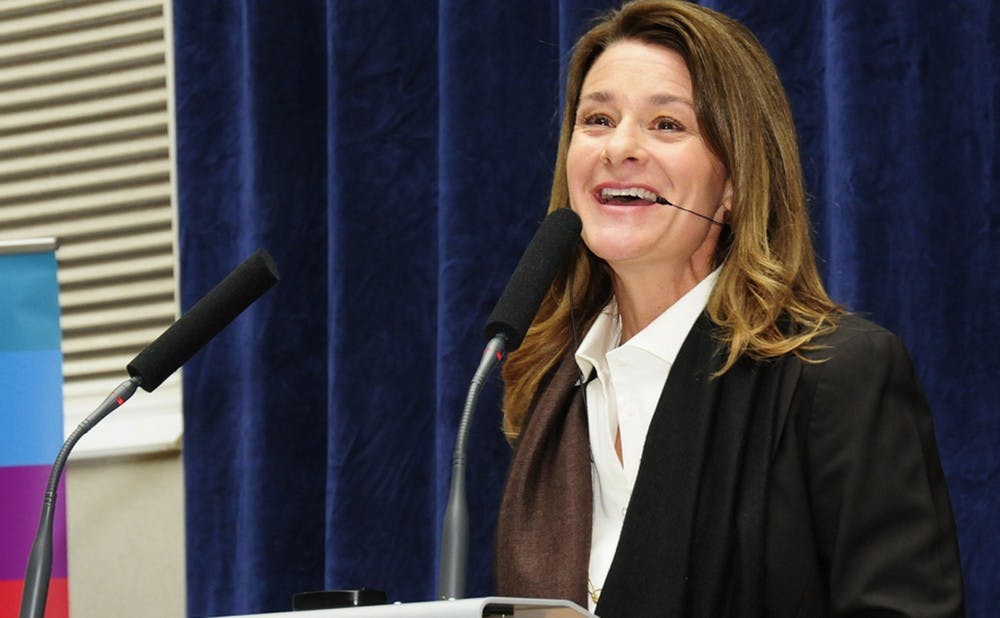AUSTIN, Texas—Melinda Gates says the workplace has not caught up with the workforce.
In conversation with three other female leaders in entrepreneurship, entertainment and media at the SXSW conference March 11, Melinda Gates highlighted the gap between the workforce and the workplace.
“The workplace has changed marginally [compared to workforce],” Gates said.
After graduating from Duke in 1986 with a degree in economics and computer science and then receiving an MBA in 1987, Gates was the only woman of a hiring class of 10 MBA’s at Microsoft. She was used to being the only woman in the room coding in college, but after a few months at Microsoft, Gates thought about quitting.
The workplace around her included several colleagues who were “assertive, abrasive and even combative.” It worried her that she wouldn’t fit in to the culture.
“What I was doing was wrong,” Gates said. “I was actually trying to emulate the people around me and force myself into their way of being, their mold. It wasn’t too terribly long later that it occurred to me that maybe I wasn’t the problem.”
‘Maybe the mold was the problem’
Not fitting the mold as a woman or minority “is a story that repeats itself industry after industry, generation after generation,” Gates said. She encouraged the audience to include equality as a part of every single conversation to lead a “radical redesign of the 21st century workplace.”
“[Minorities in the workforce] are both stalled in their entering and they’re stalled in not rising as high,” Gates said. “And in part it’s because the modern workplace still ensues that talent looks exactly like one thing and comes from one place. it doesn’t know what to do with people who don’t fit that pre-existing mold. It doesn’t challenge those biases and barriers that keep out certain people. It doesn’t invest in the mentorship and support that would welcome every single person here.”
Talent isn’t enough to move past those barriers. Highlighting the importance of mentorship, Gates said that talent stands on the shoulders of other people.
“Somebody somewhere helped you along,” Gates said. “Look, none of us got our jobs because we’re magically so fantastic at everything.”
‘We always have to pay that forward’
Gates asked the audience to consider what men, women and people of color they are pulling behind them.
“How are we all pulling society forward?” Gates asked. “Otherwise it’s not going to change.”
With only 15 percent of the private sector providing paid family leave, “parents and caregivers have to make these absolutely impossible choices about work and about family.”
Gates added that 63 percent of couples are dual income, but women still carry the bulk of unpaid work and economic dependence is linked to domestic abuse.
After her husband Bill Gates left Microsoft and joined her at the Gates Foundation, the two had to redistribute tasks at home.
“Today I’m gone; guess who’s home today?” Gates said. “He is. Guess who’s here? Me.”
Gates has 15 and 21 year-old daughters and an 18-year-old son. When Gates shared her excitement about how Mark Zuckerberg as a CEO of Facebook took two months of paternal leave, her daughter asked: why only two months?
“I want my kids to know that every relationship can be equal whether at home or at work.” Gates said.
Gates said that young people, especially women and people of color, enter the workforce eager and ready to have their ideas take hold and all of a sudden, they bump up against barriers and biases, making them question whether they belong.
“And that’s because while the American workforce has evolved dramatically over the course of my lifetime, the American workplace hasn’t caught up to that,” Gates said.
She added that the measure of success is whether it can work for people who don’t look like her dad. People who aren’t a white guy with a stay-at-home partner and a Stanford degree.
The workplace is still designed by and for people like her dad, but Gates noted that this is unsustainable and holding America back—slowing the economy, slowing innovation and squandering opportunity.
The Gates Foundation funds programs that disproportionately invest in women and people of color because women get less than two percent of all venture capital funds and women of color, less than one percent.
“Ten years from now, these guys are going realize all the deals they left off the table and think that it was crazy that more money wasn’t flowing in that direction,” Gates said. “So even if you have these great ideas, the chance for investment [for women and minorities] is miniscule.”
The reason for this, Gates said, is that investors put dollars in what they know and what is safe—white men and white men’s ideas. To combat this, the Gates Foundation makes names and schools anonymous when hiring.
“You know we can’t keep building the same old blueprint that created the old boys club,” Gates said. “What you can do is insist on equality in the workplace.”
Get The Chronicle straight to your inbox
Signup for our weekly newsletter. Cancel at any time.

